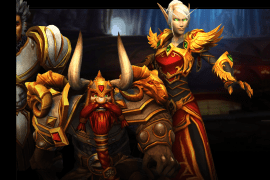When it comes to rendering a 3D model, there are generally two directions one could go in: a drag and drop solution or a fine-tuned custom solution with more dials and knobs than a 747 cockpit. Full-stack programs such as MODO offer the latter for those who are particular about every last measurement of fresnel, light direction, and in a lot of cases, heavy loads of automation.
For a lot of industrial designers and 3D modelers though, this added control is not only unnecessary for what they are trying to communicate but is also a time-killer. Ultimately—like any other tool—what it comes down to is how it works in the workflow for the user. For most industrial designers I know, they would rather have a tool that allows them to focus on moving ahead on a design with rapid visualization rather than spending time with a complicated interface and dozens of control variables.
For this, Luxion’s KeyShot has been a go-to solution for the powerful and accurate rendering power needed to communicate designs quickly and easily with little hassle. With their recently-released KeyShot 5, Luxion has taken a giant leap in the right direction for making that workflow even more powerful and seamless than before.
Let’s take a look.
What is KeyShot?
For those new to the game, KeyShot is a real-time ray tracing application that uses a scientifically-tuned and physically-correct render engine based on years of research to accurately represent materials and global illumination.
Users include designers, engineers, computer graphics specialists, photographers, marketing professionals, and 3D artists who all share the same end-goal of creating photographic-quality images and animations from their 3D digital data.
When paired with 3D content creation software such as SolidWorks via Luxion’s growing catalog of plug-ins, KeyShot can act as a real-time visualizer based on whatever adjustments have been made in SolidWorks via a feature introduced in KeyShot 4 called ‘LiveLinking.’ With LiveLinking, a mechanical engineer or industrial designer could be working on a SolidWorks assembly on one monitor while the real-world materials such as metals, plastics, and paints are updated in a KeyShot window on their second monitor as they add new features to their assembly.
In addition to SolidWorks support, LiveLinking also includes Rhino, Solid Edge, Autodesk Fusion 360, SpaceClaim, Seimens NX, and PTC Creo. There is a GrabCAD Workbench integration feature that allows users to easily upload their renderings to their Workbench account as well as other offerings that we’ll be seeing in the future. Alternately, standalone files can still be imported into KeyShot without LiveLinking or third-party integration.
How Does it Work?
A composition is created in KeyShot by importing a finished CAD model (or LiveLinking as mentioned above) and applying materials to individual parts. To put the model into context, environments (HDRI panoramas) or backdrop images can be added in addition to custom drag and drop lighting setups. While those are the basic 123’s of setting up a composition, most users will want to add a bit more realism to their composition with some more fine-tuned details. To add more realism to their model, a user could spend literally hours adjusting material textures, environment perspective, custom backdrop images, Pantone-matched colors, and a plethora of other possibilities. Fortunately, Luxion has anticipated this and has built in or automated many of these common actions to make it a quicker process.
How quick?
This system resource-intensive model of a Land Rover Defender in a basic studio scene was setup in about 3 minutes (note: this is a screenshot and not a final render):

The process for the above image was literally a drag-and-drop operation with no manual adjustments to the materials, lighting, or scene.
To put things into context, a designer at Land Rover could use this method to easily take colors from the color research department and add them quickly and accurately for photo-realistic mockups to send back in literally ten minutes or less:

Okay, got it. So what is KeyShot 5 ?
The latest release of KeyShot brings to the table even more features to make the workflow for a designer easier and faster than we’ve seen in previous releases. Sure, that can be said about most new software releases (except for maybe OS X) but in this case, Luxion’s version jump this time around really has brought some vast improvements worth taking a deeper look at:
Interface

Most noticeably, the interface is drastically different than previous versions:

While earlier versions were still fairly intuitive and easy to use, KeyShot 5 takes other factors into consideration including easier viewing (both the interface itself as well as control options) and a better layout of tabs for an increasingly wide variety of screen types and sizes. Additionally, the thumbnail previews offer more accurate representations of the materials than seen in previous versions…a very welcome improvement for speeding up the workflow even more. If textural changes are necessary, an easy-to-control pop up dialogue allows for quick changes on the fly.
More could be said about the interface changes in KeyShot 5, but the most important takeaway is that Luxion has both created an even easier dashboard to control and work with no matter what your screen size is as well as added more power to the existing tools that reside within it.
KeyShot Cloud

What would a software update be in 2014 without some mentioning of the big and mighty Cloud?
Luxion has intelligently positioned themselves to offer an online sharing platform that allows users to upload their materials, environments and other assets for the greater community. If you’re familiar with what Luxology has offered for its MODO userbase for awhile now, this should look familiar. With that being said, Luxion has enabled Cloud to work within a project without the need to step into your browser to collect your assets. For example, if you find that you are needing a specific type of wood grain, you could launch the Cloud from within your project, navigate to what others have uploaded under a search for ‘wood’, download to your project, and keep working.
If karma floats your boat, any adjustments that you make to the material can be easily uploaded back up to the Cloud for others to work with once you are done. Sharing is caring.
Sun and Sky

One of the more powerful new features in KeyShot 5, Sun and Sky, allows a user to create any natural lighting scenario with a custom HDRI editor. These custom scenarios can be location-based and set to any time of day with just a few clicks from the menu. If you think that your soccer ball model would look best with a sunrise-style light as seen in Rio de Janeiro on July 10th, 2014…well, you can do that.
Of course, all of this is in real-time so you don’t have to wait 12 hours to see if it would actually look better with alternate sunset lighting like you would a traditional photograph. Again, this isn’t an entirely new concept for rendering software however when combined with the real-time results and intuitive interface as seen with KeyShot 5, it is an extremely valuable and welcome feature.
Instancing

Like Sun and Sky, instancing is a feature that has been seen in other software offerings but is still an extremely welcome feature in KeyShot 5 for when multiple iterations of a single model are necessary. Simply put, instancing is when an object is cloned multiple times in a scene but rather than duplicating that data over and over again, the software takes a mental note and only uses system resources when necessary. This might not seem like a big deal if you are only rendering three static objects…but if you are setting up a scene with highly-detailed geometry and need to highlight multiple CMF directions, instancing can most certainly be your friend.
NURBS Ray Tracing

Capability-wise, this is one of the more impressive new features of KeyShot 5. NURBS or Non-Uniform Rational B-Splines are a mathematical representation of 3D geometry that describes a shape from simple 2-D lines. In previous versions of KeyShot, NURBS data was converted into polygonal meshes in order to be worked with inside KeyShot. In KeyShot 5, NURBS data can be imported and worked with directly…which is a very big step up and will certainly push some users over the fence towards getting this release.
Since this is the first release of the new NURBS feature there are still some rough edges to work out such as maintaining integrity in larger and more detailed models, but as a whole it is a welcome feature that a lot of users will find useful and will only get better over time.
Perspective Matching

This is a big one for users looking to add their own flavor of art direction to their scenes.
Using directional arrows, a user can match the perspective of their model to the perspective of a scene–be it an image pulled from a stock photo site or an image taken while coming back from a coffee break. For example, if you’re rendering a cafe racer motorcycle and want to match the perspective of a street you found in Europe while on vacation, you no longer have to fiddle with panning around the model to find the right fit: using the directional Perspective Match arrows takes the guesswork out and matches your model to your backdrop.
We would love to see a perspective grid similar to what is used in Adobe Illustrator in a future KeyShot update to get a wider scope of the perspective of the entire scene…but as is, this is an extremely useful and welcome feature that will speed up our workflow immensely.
Performance
As expected, this release is cleaner, leaner and faster than other releases thanks to some tinkering under the hood by Luxion’s talented software engineering team.
It’s one thing to add new features to a software offering like KeyShot , but these days users also want the software to take up less room on their hard drive while simultaneously operating faster than previous releases—not an easy feat to pull off.
Fortunately, KeyShot 5 performs up to 125% faster than KeyShot 4 and through our testing…seems about right.
Conclusion
If you’re new to KeyShot , then you’ve entered the KeyShot game at the right time.
KeyShot 5 offers the most power and flexibility compared to any other release while retaining the same features that have made it great all along including things not mentioned in this review (animation, extensive material library, among others). If you’ve been watching the train go by for a few years now and have been waiting to jump on, this is the perfect release to jump onto and the software can be learned over the course of a day…unlike some other render package offerings.
If you already use KeyShot , then the big question is: Why KeyShot 5 ?
Simply put, the new release offers the same as before but better and more considered for your workflow.
A lot of the annoying elements of orienting a model for example are made easier with perspective matching…the NURBS import feature is a huge welcome for expanding the import arsenal…the Sun and Sky feature means even more control of your lighting environment… the Cloud feature not only offers more materials but also adds an element of community that you’ll realize you missed all along without even thinking about it.
If KeyShot is good for one thing and one thing only—getting models in and out the door quickly and beautifully with minimal hassle—KeyShot 5 is the best release to date.
KeyShot 5 Pro starts at $1995 and can be purchased over at KeyShot.
Note:
The above examples of the Land Rover Defender are for explanatory purposes only and do not necessarily reflect the views of Land Rover or those associated with Land Rover.
Josh Mings of SolidSmack is an employee of Luxion.






